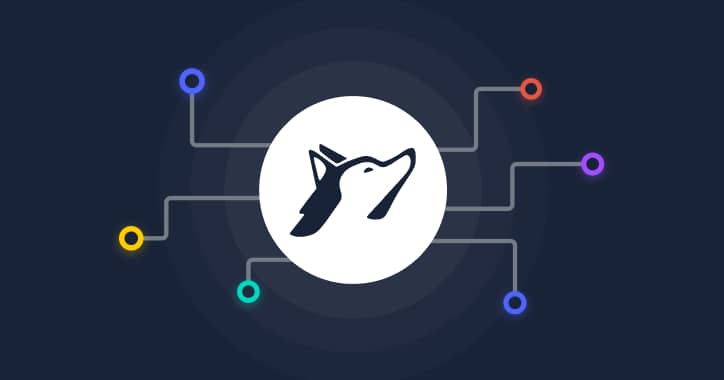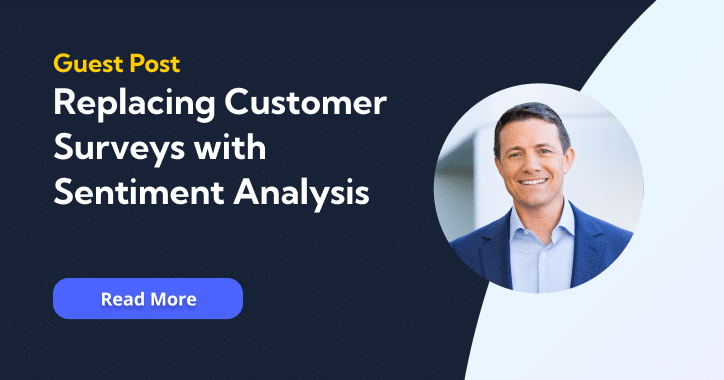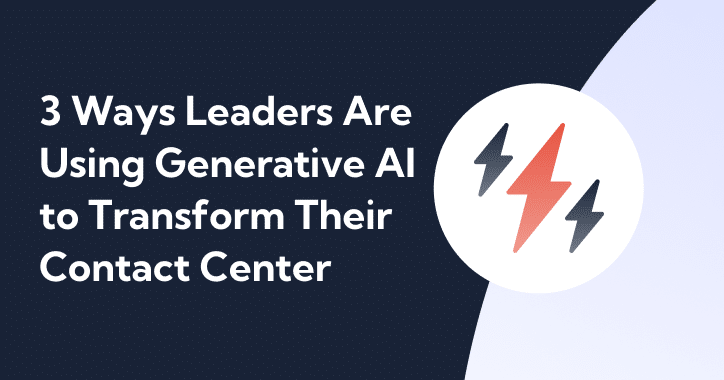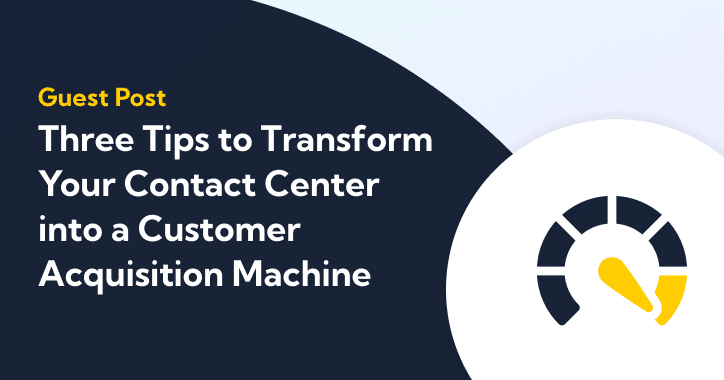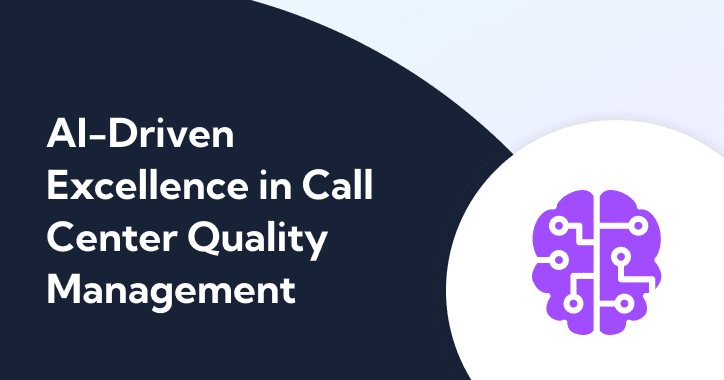In simple terms, ICPs in sales is a representation of the prospects that likely need your product or service. This means that when you’re creating your marketing campaigns or sales strategy, you’re putting the needs of those people at the forefront of your mind.
For decades (or even centuries), marketers and salespeople only knew a single approach: be everything to everyone.
While this approach can work in certain circumstances, it’s not exactly the most efficient way to do things. Only large corporations can afford marketing to every person on the planet, and even then, they could be saving huge amounts of money if their marketing was at least a bit more targeted. That’s why Ideal Customer Profiles (ICPs) were developed.
In this blog, we’ll introduce you to the concept of the Ideal Customer Profile (ICP), why you should care, and how you can leverage Artificial Intelligence (AI) in creating it.

The Revolution of ICPs in Sales
The Evolution of Targeting: From Mass Marketing to ICP
Traditionally, businesses have relied on mass marketing to put their name out there. The idea was to reach as many customers as possible, regardless of the possibility of these customers considering their products.
However, recently, this approach has proved to be inefficient. The idea that everyone could use or need your product is just too optimistic to be true — a person who is sensitive to caffeine won’t likely consider buying your coffee.
Not to mention, marketing to a mass audience means that your product’s design will be average at best. It’s a product created to please everyone by making compromises here and there along the way.
ICPs have shifted the dynamics of marketing by narrowing down the focus of marketing campaigns to target a “minimum viable audience”. This strictly defined audience is more likely to praise your product and recommend it to other people of similar interests if you understand their needs and adapt your product’s design accordingly.
Plus, by marketing to a small segment of customers, you’ll need a much lower marketing budget to reach them than if you were marketing to a mass audience. This is especially important for startups or small businesses with limited capital investment capabilities.
Why Modern Businesses Can’t Afford to Ignore ICP
If you don’t have an ICP, this can only mean one thing: you have no idea who your customers are.
Failing to identify your customers means that you’re already wasting money in different ways. In other words, since you’re offering your product to anyone and everyone, you’re continuously draining your resources without getting the Return on Investment (ROI) you expect from your efforts.
Developing an ICP can help your sales and marketing teams create highly targeted marketing campaigns, perfect their sales pitch, and generate and qualify leads more effectively.
Your sales agents should be focusing their efforts on leads that are more likely to convert. This will not only save you precious resources but also enable more sales and gradually create a loyal customer base that adores your products.
Moreover, an ICP helps you deliver your key message to the right audience in the best possible way by highlighting your investment in their needs and pain points.
Decoding the ICP: More than Just a Buzzword
Beyond the Basic Definition
An Ideal Customer Profile (ICP) provides a detailed description of the prospects who are likely to benefit from your offerings.
Typically, an ICP describes the best-fitting representation of a business that makes it an ideal candidate for your marketing and sales efforts.
An ICP is based on qualitative and quantitative data analysis techniques that capture real-world insights that inform you who your ideal customer might be, enabling you to direct your business resources more efficiently by prioritizing prospects.
The Anatomy of an Effective ICP: Key Ingredients
The primary components of an effective ICP include the customer’s:
- Industry
- Company size
- Number of employees
- Business needs
- Customer base
- Challenges and aspirations
- Valuation
- Budget and annual revenue
Contrasting Characters: ICP vs. Buyer Personas
The concepts of ICP and buyer persona are sometimes confused with one another.
Both are intended to create a narrower audience with comparable interests and problems, but a buyer persona is actually just a part of your broader ICP marketing strategy.
An ICP gives you an overview of the companies or groups of users who might be interested in your product, while a buyer persona represents a subset of these groups.
As a business, you may develop numerous buyer personas, but only one ICP for the same exact product.
Let’s illustrate this with a quick example: suppose that you’re a company that offers HR software solutions. Your ICP may look like this:
- Small-mid sized businesses
- California-based
- Industry: Technology
- 500-3,000 employees
- Annual revenue of $500K – $1,000,000
- Need HR solution to manage and streamline onboarding, payrolls, org charts, and training and development
Now, within that ICP, you may have this as one of your buyer personas:
- Job Title: HR/Recruitment Manager
- Reports to the CEO and CTO
- Age: 30-40
- Looking for an efficient HR management platform to streamline recruitment and HR matters
- Preferences and needs: performance, customization, scalability, access controls, etc
As you can tell, the buyer persona represents the actual end-user who may email your company to inquire about your solution, see your ad on social media, or receive your sales pitch. The ICP, on the other hand, is a broader representation of your customer base that includes the company’s description, size, revenue, and more.
Crafting the Perfect ICP in Sales: A Step-by-Step Walkthrough
The Power of Existing Customers: Your Goldmine
Many businesses overlook the importance of existing customer data in crafting their ICPs, but here’s the truth: building your ICP around anything other than real customer data is just as worthless as not creating it.
And we’re not just talking about CRM data — we explicitly mean data that you collect from your customers from face-to-face conversations, surveys, emails, and other more personal communication channels.
In order to capture meaningful data that you can put to use, it’s important to make each interaction count by asking your customers about the solutions they currently use, why they use them, what could be done better, their challenges and priorities, and what could make them switch from one provider to another.
Diving Deep: Methods to Extract Rich Customer Insights
To create an accurate ICP, you need to find ways to gain meaningful insights about your customers. Some of the tried and tested methods to do this include:
- Social media listening: Monitoring your customers’ activity on social media platforms can tell you how your customers perceive your brand.
- Website data analytics: Tracking user behavior on your website can give you an idea of your customers’ preferences and demographics.
- Customer surveys and interviews: Online customer surveys and questionnaires, as well as interviews, can help you understand your customers’ goals, problems, and opinions on your products or services.
- Competitors analysis: Analyzing your competitors’ ICP can inspire your own ICP since you have the same customer base.
- CRM data: analyze your customers’ past interactions and purchase history with your company to identify the most valuable customers and learn about their needs.
Beyond Basic Demographics: Behavioral Clues and Indicators
For many businesses, demographics serve as the cornerstone for identifying their prospects. However, while we can’t certainly don’t encourage ignoring demographics, they don’t give you the complete picture of who your audience is.
Other attributes can even be more important than demographics. These include:
Psychographic Elements
Psychographics, such as lifestyle, goals, pain points, interests, and habits help you understand your customers’ behavior and how, why, and when they make buying decisions.
Behavioral Cues
Behavioral cues indicate the actions your customers make when they interact with your business. They are vital for understanding how customers interact with your company and how these interactions can impact revenue.
They can be summed up in the following list:
- Buying history
- Engagement
- Readiness to buy
- Product usage patterns
- Loyalty
- Satisfaction levels
Matching Pain Points to Solutions: The Key to Resonance
Creating marketing messaging that resonates is all about aligning your solutions with your customers’ pain points.
Showcasing exactly how your product or service is capable of solving your customers’ problems in the most efficient way is a surefire way to accurately qualify leads, acquire new customers, and retain existing ones.
The ICP Payoff: Tangible Benefits for Businesses
Supercharging the Sales Process: Efficiency Gains
Creating an accurate, data-driven ICP makes it easier for your sales team to focus their sales pitch on customer needs and problems. It helps your sales reps prioritize prospects based on the criteria set by the ICP, providing efficiency gains.
This ensures that the accounts with the highest potential aren’t neglected because your sales reps are directing their effort in the wrong direction.
Marketing with Precision: Messages that Resonate
Your marketing message isn’t really about your company or product — it’s about your customers. Developing an ideal customer profile serves as the basis for creating powerful marketing messages that resonate with your audience.
Learning about the challenges your customers face and listening to their feedback helps you describe your buyers’ situations more accurately in your messaging.
On top of that, an ICP enables your marketing team to understand where your audience is, ensuring that they focus on the communication channels they use the most. For instance, if your audience is young adults, Instagram might be a good place to find them.
Innovating with Purpose: ICP-guided Product Development
Your ICP acts as a cheat sheet for your product team. By continuously receiving relevant feedback from your highly targeted group of customers, you’ll be able to direct your product development process in the right direction by implementing value-adding features, fixing problems that affect the user experience, and eliminating unnecessary features that increase the product’s cost.
Further, ensuring that your product meets your customers’ expectations means that you’ll be able to attract similar-minded customers with the power of word of mouth.
Steering the Ship: How ICP Gives Clearer Business Direction
ICP promotes clearer business direction by emphasizing the Average Contract Value (ACV). It gives priority to higher-value accounts that drive revenue and focus on quality, not quantity. Think about it: would you rather allocate your resources to 20 $10K accounts or 5 $40K accounts?
Having fewer clients means that you’ll be able to drive attention to developing strong customer relationships, building customer loyalty to increase Customer Lifetime Value (CLV), and continuously refining your sales and product development strategies in accordance with your customers’ needs.
Traps and Missteps: Common Pitfalls in ICP Sales Creation
The Cost of Misalignment: Resources Down the Drain
Creating an accurate ICP requires alignment across your entire organization, not just your marketing team.
You need to include your sales, customer service, and teams, as well as any other involved departments that may have valuable input. For instance, a sales rep may have a different perspective on how customers interact with your business and what they really need. Similarly, your product team lead may notice things your marketing team overlooked.
As a result, you’ll be able to create a robust marketing strategy that benefits your organization as a whole instead of wasting resources on campaigns that target the wrong prospects.
Mismatched Messaging: The Consequences of a Poor ICP
If you create a poor ICP, you’ll end up crafting mismatched marketing messaging since you haven’t really understood who your ideal customers are.
Without an effective ICP, you won’t be able to communicate a message that resonates with your audience, leading to wasted resources, poor customer experience, and lost revenue.
AI: The Game Changer in ICP Formulation
Beyond Human Limits: AI’s Role in Modern Sales Strategies
AI plays a pivotal role in shaping modern sales strategies and techniques, particularly in Account-Based Marketing (ABM). This marketing approach targets high-value accounts with personalized messaging, and with AI, you’ll be able to gain valuable insights that help you improve customer segmentation, and streamline scalable personalized communication.
Incorporating AI into ABM strategies involves the following best practices:
- Harness AI-driven insights to comprehend each account’s unique challenges, goals, and preferences.
- Leverage AI algorithms for precise micro-segmentation, enabling more personalized messaging.
Sales prospecting relies on reaching the right leads at the right time with personalized messages. AI enables you to identify potential customers that align with your ICP with behavioral and predictive analytics.
AI-Driven Insights: Taking Customer Analysis to New Heights
Manually pulling data from your customer interactions and analyzing them can certainly be resource-intensive. The problem is you do need this data to create your ICP.
Modern AI-powered Conversation Intelligence (CI) solutions are capable of capturing and analyzing large amounts of data and extracting actionable insights that you can use to create your ICP.
With CI software, you can automatically record, transcribe, and analyze customer conversations for intent, patterns, and trends to create rich ICPs that help you improve your sales and marketing approaches.
Predict, Adjust, Perfect: Dynamic ICP Refinement with AI
AI solutions can anticipate your customers, enabling you to proactively refine your sales, marketing, and product development strategies accordingly.
Leveraging predictive AI and ML models, you can automatically create accurate forecasts that are continuously updated in real-time. This enables you to adjust your ICP to match the AI-powered predictions and models.
For instance, if you’re a SaaS company that targets healthcare institutions that need software for maintaining and protecting health records, you can utilize predictive analytics to identify healthcare facilities that expect a surge in the number of healthcare records they need to keep.
A healthcare company seeking HIPAA compliance, for example, is highly likely to be required to put stricter controls on how they maintain and protect healthcare records.
Smart Segmentation: AI’s Role in Granular Customer Grouping
Artificial intelligence algorithms can help you segment customers into groups by analyzing big data and identifying correlations across different customers. Such insights are nearly impossible to capture manually.
With AI-powered customer segmentation, you gain deep insights into your customers’ data to understand their needs — way beyond just simple demographics. This can help you create personalized support experiences and marketing campaigns that address your customers’ pain points.
What’s more, AI customer segmentation is easily scalable. As your customer base grows, your AI solution will still be able to analyze your customers’ data and extract useful insights to influence your decision-making.
Not to mention, AI enables adaptive targeting by continuously spotting changes in customer behaviors and preferences, ensuring that what you offer is always relevant to what your customers expect.
Upcoming Trends in AI and ICPs in Sales
The Fusion of AI and ICP: What the Future Holds
As AI and ML solutions continue to evolve, businesses can expect such solutions to yield more accurate insights and forecasts that inform their ICPs. As a result, cutting down on marketing costs, reducing customer churn, and developing innovative products that foster long-term customer relationships will become even more achievable.
Charting the Path Forward: Next Steps for Companies
It’s vital for companies seeking to build or refine their ICPs using AI and newer technologies to stay updated with the advancements in AI and ML technologies. They also need to actively seek to integrate such technologies into their existing processes and adapt their ICP as more advanced technologies enable more accurate prospect representation.
Leverage Balto’s Features and Functionalities for ICP Enhancement
Balto offers a wide range of capabilities that are indispensable for enhancing your Ideal Customer Profile (ICP).
With AI-enabled, real-time analytics and agent guidance and feedback, Balto equips your sales team with the tools they need to align their efforts with your company’s ICP, making their interactions more informed and effective.
To experience the transformative potential of Balto for yourself, we invite you to try our free demo today and witness firsthand how it can elevate your sales strategy. Don’t miss out on this opportunity to optimize your ICP and supercharge your sales performance with Balto!

